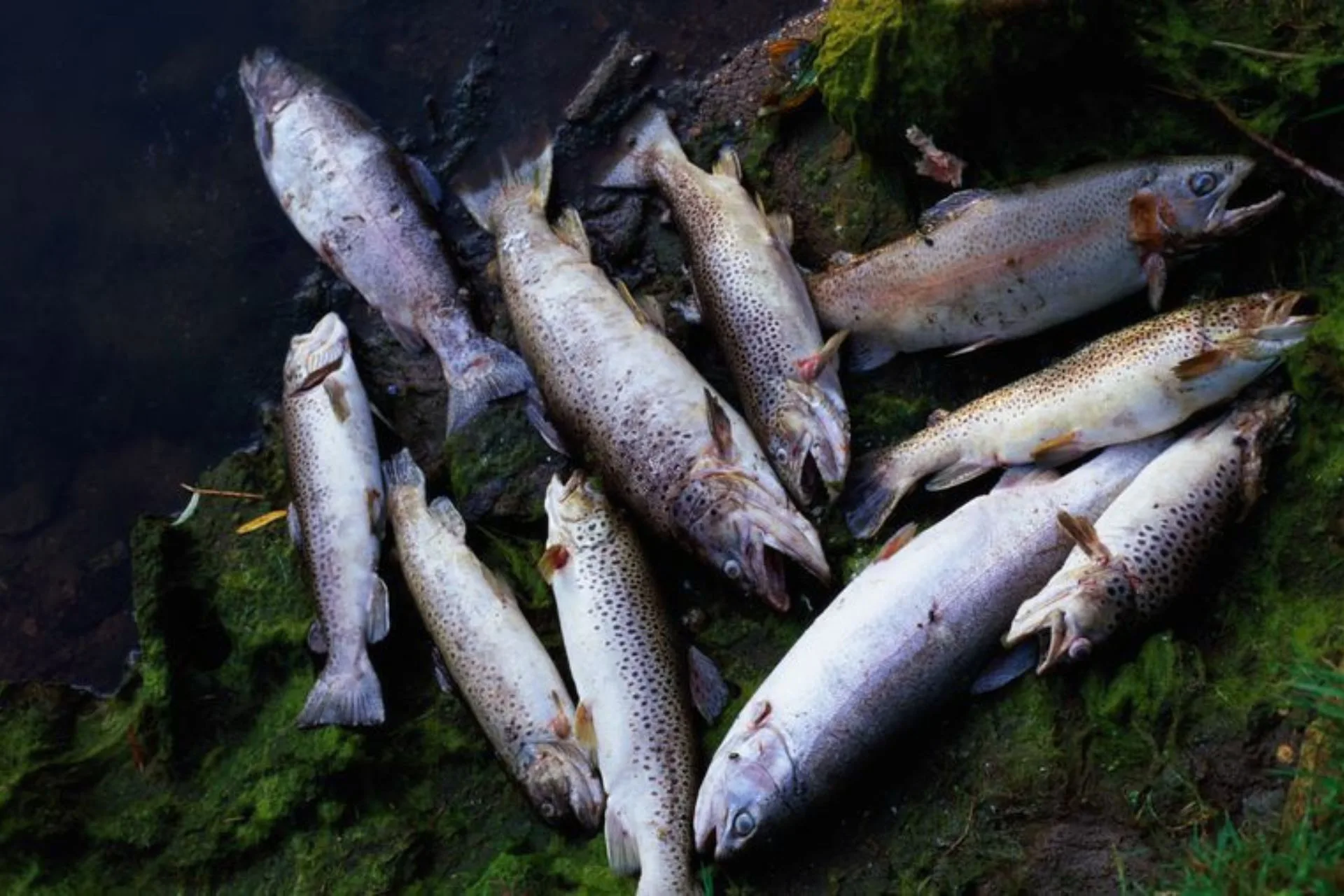Our cold-water fish and aquatic species are in trouble. Changing water temperatures, human introduced fish, and pollution are the causes.
Cold water ecosystems are experiencing disproportionate impacts. 50% of the natural cold water fishery populations have disappeared, according to several studies.
Impacts from temperature change are the first concern. Increasing water temperatures are being caused by over development, pollution introductions, and climate change. When humans develop the land, they often move close to watersheds. Impervious surfaces allow warmer water to quickly run off into the watershed instead of absorbing into the ground. Less shade along watersheds increases the water temperature and reduces habitat.
Changing weather patterns causes cycles that increase drought or alter consistent patterns. This has always been a concern but seems to be happening more often.
Warmer waters promote more diseases, add stress to fish. Increase algae which decreases oxygen levels and causes more flooding and runoff concerns. Invertebrates, minnows, and food sources decline in warmer waters.
Sports fish that are caught and released tend to have more stress and less recovery in warmer water. Mortality from being caught multiple times increases their mortality rate when waters are over 65 degrees.
Fish biodiversity is in decline. Over 18,000 fish species live in cold water ecosystems and account for 25% of all invertebrates on the Earth. A fourth of all these species are at risk of extinction.
Pollution certainly does not help. One issue that most people are not aware of is Pharmaceutical Pollution. Humans take a huge number of drugs. Our meds become meds for aquatic fish and all critters in the food chains.

Our bodies do not absorb 100% of the drugs we ingest. What is not absorbed in our bodies literally goes down the toilet. Water treatment plants do not remove most of these chemicals. The water is now polluted with many of these unintentional medicines that impact on all other living critters and fish.
Since these levels are lower, it is unlikely that humans will be impacted by drinking these waters, but what about all other life?
Microdoses are all that are needed to affect small aquatic creatures, and fish. When predators eat them, they also accumulate these drugs. The drugs affect in wildlife in different ways.
Synthetic estrogen is a common drug found in birth control meds. Studies have showed that male minnows become “feminized” and impairs their ability to reproduce.
Antidepressants like Prozac and Zoloft affect fish behaviors These meds seem to increase fish mating behaviors.
Clobazam, a Benzo used to treat seizures, seems to affect salmon migrations. Salmon tend to navigate and migrate back to sea faster and in greater numbers when introduced to this drug. The thought is that when the salmon are passing through dams and turbines, the stress is less when the fish have been exposed to Clobazam. Salmon recover from stress faster.
Metformin, a Diabetic drug, cause fish to become less aggressive.
There are thousands of other chemicals being released from pollution that we have no idea what they do. Caffeine, Tylenol, aspirin, and antibiotics are also a concern. More studies need to be done to see how we are impacting our fish and aquatic resources. We simply do not understand how we are impacting these ecosystems.
Once we begin to change natural behaviors, more negative consequences will result. One important step may be to take a closer look at our wastewater treatment plants and make sure that these chemicals are removed before the water is released back into nature.
Nature Knows Best!
Montana Grant



